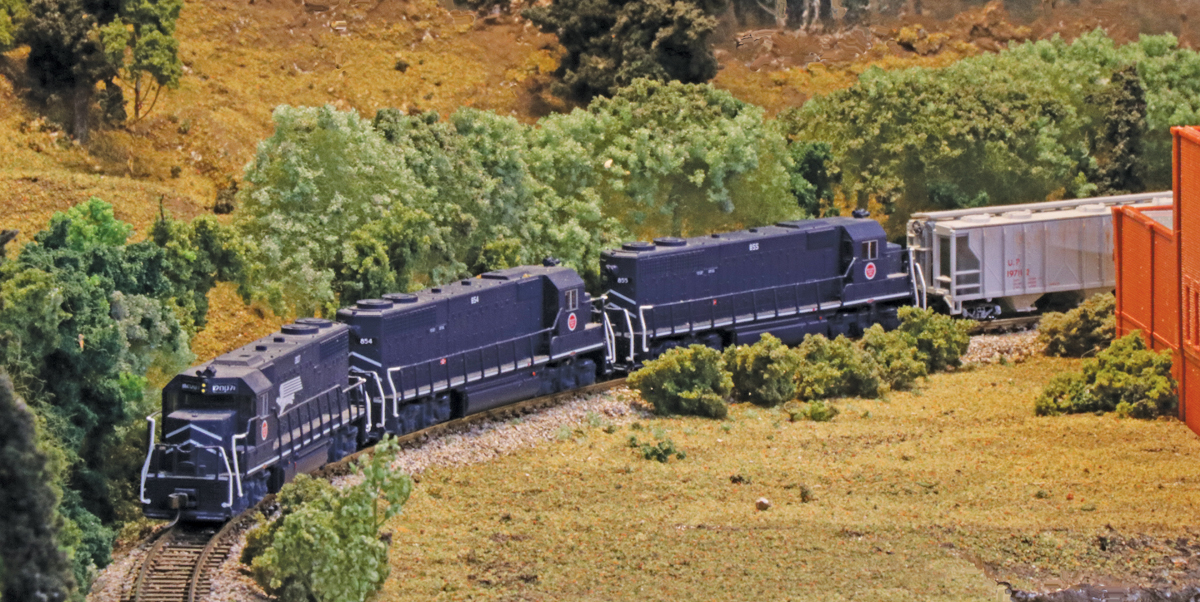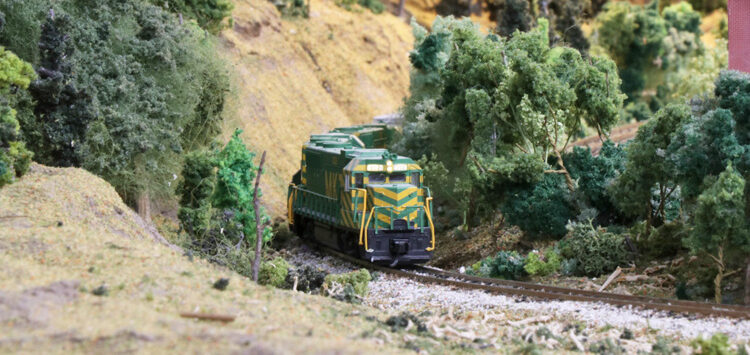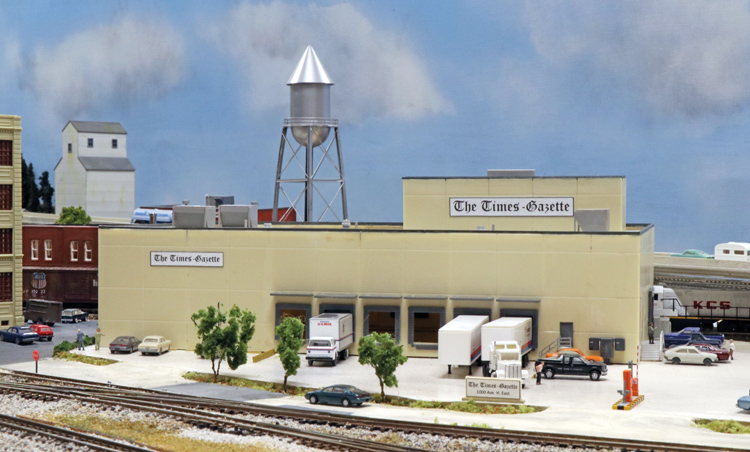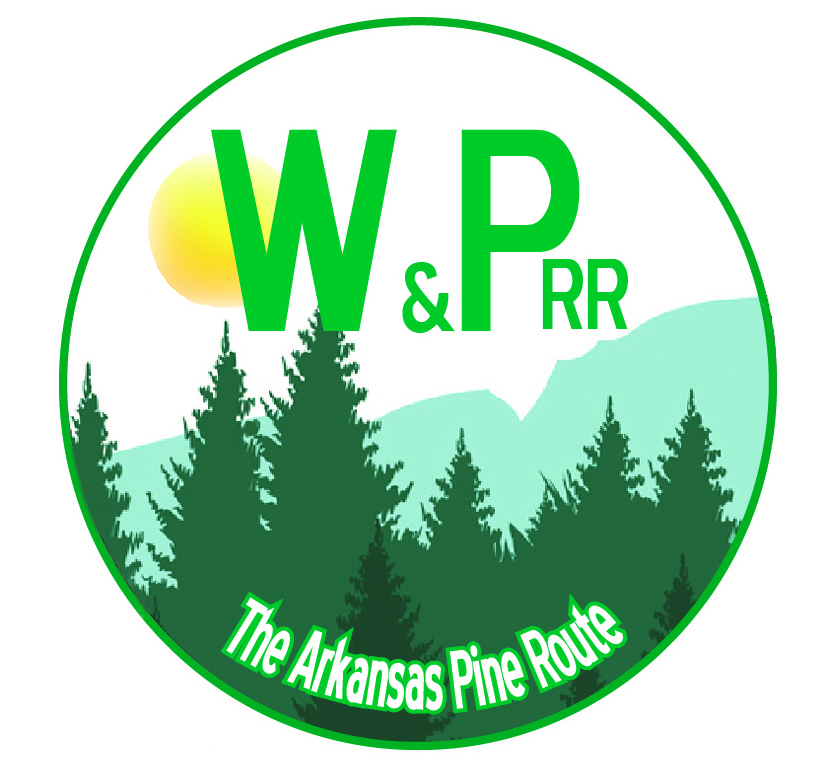All about the community of model railroading and rail enthusiasm

The Whitehurst & Pine Ridge Railroad is a freelance N-scale Class II short line midway along the proto-lanced Union Pacific route between Dallas and Kansas City in the early 1990s. The W&PRR is part of a larger operational footprint that features Class I main line running in big-city and small-town settings.
At a time when the UP was well into absorbing other railroads, the W&PRR, a UP subsidiary known as the Arkansas Pine Route, emerged to handle the first and last miles for customers near Fort Smith, AR. Various commodities are switched at industries in Van Buren, Whitehurst and Pine Ridge and interchanged with UP in Fort Smith.
The W&PRR operates on a former Missouri Pacific branch line and depends on healthy cement, paper, plastics, flour and petroleum carloads to make a profit, using hand-me-down equipment from its corporate parent.
The era has been stretched from the mid-1980s on the old W&PRR to the early 1990s, when UP is entering its final phase of mergers and acquisitions. Missouri Pacific, Missouri-Kansas-Texas, Denver & Rio Grande Western and Western Pacific power are routinely intermingled with UP’s fleet of four- and six-axle diesels. While the mergers haven’t been complete, Southern Pacific and St. Louis & Southwestern (Cotton Belt) leased power are occasionally utilized for manifest runs.
While UP controls the long main line between Dallas and Kansas City but the KCS plays an integral role in operations. KCS has trackage rights from Kansas City to Dallas and a robust switching operation in Texarkana with its Kansas City Southern Terminal short line. There, the KCS serves grain, produce, beverage, lumber and print customers, as well as interchanging with the UP.
UP main line traffic includes unit grain, coal and tank trains as well as manifest freights, which are interchanged in Fort Smith and Texarkana. The Class 1 also has a special arrangement with the W&PRR in Pine Ridge to interchange empty and loaded cement hoppers. A coal train runs to Jefferson City and Indiana City in lower staging.
The latest iteration of the W&PRR has been underway since late 2018 and is fully operational. Scenery is advanced.
Progress is occasionally documented in the Cowcatcher and on this website.
The New Whitehurst & Pine Ridge: From the Beginning (Updated July 2024)

Formations Inspire Mount Pleasant’s Finish-out (November/December 2022)
Until the fall of 2022, Mount Pleasant was a work in progress that had stalled. Some deciduous trees and conifers partially covered one side; the rest was a bare, unpainted shell specked with small tree trunks to support a bulk forest. Plans were to blend a forest somehow with pieces of chipped flagstone that found their way to the workbench.
A drive through the Garden of the Gods Park on a trip to Colorado a few years ago made the vision clear. Slanted layers of amber rock surrounded by lush vegetation served as the inspiration to finish out the mountain.
Those small flagstone fragments were perfect for creating a similar formation on the back side of Mount Pleasant in just a few easy steps.
The New Subway on the W&PRR (July/August 2020)
Operational model railroads typically have a life of their own behind backdrops and underneath the main decking often unseen by visitors. Trains and cuts of cars linger in the shadows, awaiting their entrance on the grand stage, only to fade into the woodwork once the lights are dimmed.
Some of those hidden tracks and narrow alleyways are known as staging and they come in various sizes and lengths. A unique feature of the old N-scale Whitehurst & Pine Ridge Railroad was a complex network of track intended to be staging under the top level of the layout. A friend named it “The Subway.”
Because it was an afterthought (and built entirely after the top level was complete), The Subway was not a good example of staging and often took some white-knuckle operations to navigate. Parts were visually obscure, a mirror helped guide trains through a powered turnout where trains were backed into Little Rock Yard.
That experience inspired lower staging on the new W&PRR, which is a key part of the operating scheme. The system avoids hidden multiple-track staging and offers the feel of an extended main line running much of the layout’s perimeter.
Expanding a Commercial Viaduct (November/December 2020)
When plotting the main line across Boonville Canyon on the N-scale Whitehurst & Pine Ridge Railroad, the need for a long bridge was obvious. A staple of Atlas N-scale is the N-Viaduct Kit. Easy to build, the early American-style structure assembles into four arches of simulated cut stone masonry.
The Carthage Viaduct has performed flawlessly since install and is a key piece of the W&PRR’s main line from Kansas City to Dallas. The structure adds intrigue to the W&PRR and a little something extra for visitors to observe.
Hidden Mains: Expanding a Tight Spot (March/April 2021)
Layout builders must fit hundreds of prototypical miles into a compact space. At some point the main line may either cross itself or run parallel.
Usually, one end of the track can be hidden behind a backdrop, in a tunnel, in back of buildings or disguised along an elevated ridge.
The Whitehurst & Pine Ridge Railroad does a good job of separating the main line as it winds around a three-pronged benchwork design, with the exception of one place. At one location the far ends of the main line come precariously close. The answer to distract the eye was a dense tree line.

Modeling Newspaper Operations (September/October 2021 and November/December 2021)
With the wealth of soft pines along the Whitehurst & Pine Ridge Railroad’s Arkansas Pine Route, it’s only natural that the pulp and paper industry thrives on the western edge of Arkansas.
The W&PRR’s service area extends well beyond the many harvesting fields and mills, but newsprint is a key commodity. Large rolls of 30-pound newsprint produced in Pine Bluff, Ashdown and Prescott are regularly delivered to Elaine Offset in Van Buren and The Times-Gazette in Texarkana, where yesterday’s news comes to life.
In Texarkana, The Times-Gazette has made a big capital expense in a 14,000-square-foot printing and distribution facility.
The Original Whitehurst & Pine Ridge Railroad – The original W&PRR was conceived in Watauga, TX, in the mid-1980s and evolved into a loop railroad serving Whitehurst, Pine Ridge and Elaine.
UPDATED! The New Whitehurst & Pine Ridge Railroad – On New Year’s Eve 2018, the first nails were pounded into the wood framework for the expanded W&PRR.
Evolution of Operations – Work has been steady on the W&PRR since the onset of the pandemic. The biggest development of the railroad has been defining its purpose. What does it do? Why is it there? Where is it going?
Switching Pine Ridge – A simple change in operations and help from its Class I sister allows the W&PRR to better handle inbound and outbound carloads at Greystone Cement in Pine Ridge.
